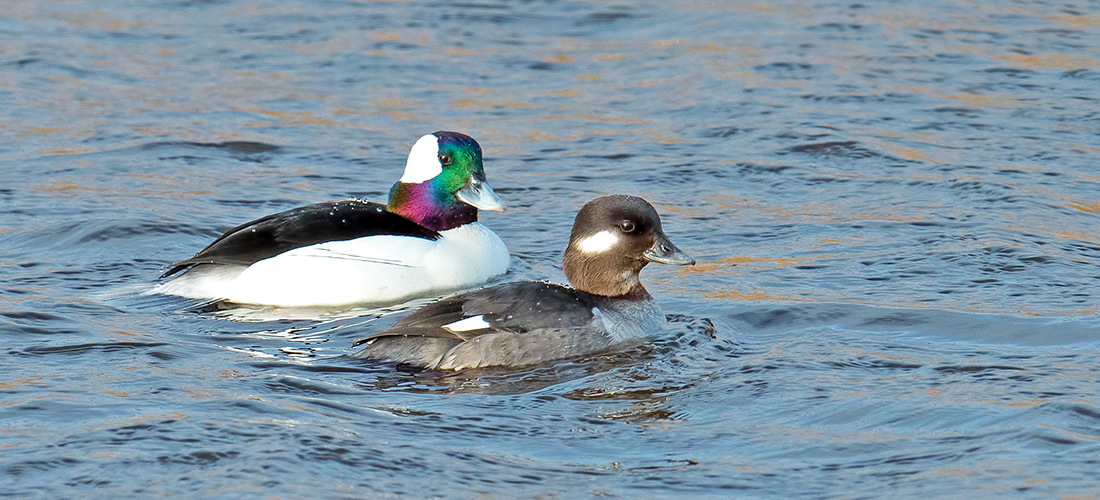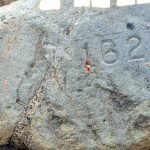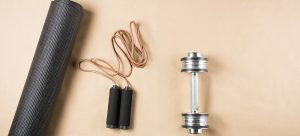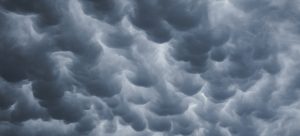
The Return of the Bufflehead
The little ducks are back — if only for the winter
By Susan Campbell
For me, late autumn means one of my favorite groups of birds, waterfowl, are on the way south.
As the colder months bring thousands south to spend the winter, the vast majority of ducks, geese and swans touch down along the coast. Still, inland throughout the Sandhills and Piedmont, reservoirs and farm ponds attract a great diversity of these web-footed wonders. Although nonmigratory wood ducks and mallards are common enough, smaller species can be seen, including the bufflehead.
Male and female buffleheads have distinctly different plumage. Males are the showier of the two with lots of white on the head and the body and a splash on the wings. The glossy green “buffle” over the male’s cheeks and crown, though, is the bird’s really distinguishing feature. Also look for dark feathers on the back, and, in flight, a white stripe at the shoulder and a patch across the middle of the wing.
Females are brown all over with just a white “ear” patch. Juveniles will sport their first set of feathers through most of the winter with young males looking very much like their mothers: having very limited white feathering. Overall, these are small, stout ducks with short, wide bills.
One surprising feature of the males is their red-orange legs. You may get a glimpse of them as they come in for a landing. But come late winter, as their hormone levels change, they will be more apt to display their colorful shanks in addition to bobbing their handsome heads. Listen for their characteristic croaking calls as they swim around their mate, showing off. Unlike other species of ducks, they mate for life, only spending a little time apart in late summer when they undergo a complete molt.
Bufflehead breed way up north in boreal forests — in close association with northern flickers. They are dependent on the woodpecker; abandoned flicker cavities are just the right size for the diminutive hen to lay her eggs. As with other cavity-nesting waterfowl, as soon as all of the eggs have hatched (and that may take all day since there can be a dozen or more), mom will exit and call the young to her on the ground. The literal “leap of faith” ensues and the fat, downy balls of feathers will, one by one, jump out of the nest hole. It is not unusual for them to bounce a time or two when they hit the leaf litter. But their insulation and soft bones protect them from the impact. The brood will be led a short distance to water where they are well equipped to spend day and night from there on out.
Inland, the birds have quite a broad diet during the cooler months. They have legs placed well back on their bodies so they are at ease diving and swimming in all sorts of wet habitats. You may see bufflehead diving not only for invertebrates but small clams, snails and worms in deep water. In shallow bays and around pond edges, they search out seeds and berries.
Quite unexpectedly I came to realize that buffleheads can become regular “yard birds” if you live on a body of water that they frequent. In Whispering Pines, I would throw corn to the ring-necked ducks (yet another small wintering species) that came up to our bulkhead. Not long after the first bufflehead appeared, in about 2010, they not only zeroed in on the free food but quickly drove away the ring-necked fowl. Week after week, these little ducks would arrive at dawn looking for breakfast and provide lots of entertainment, enthusiastically diving to gobble up cracked corn. By the end of February, the flock would disappear, no doubt heading north, back to their breeding grounds. So each fall I would anticipate the return of the buffleheads. I would wait and wait: until one morning in late October, following a good cold front, the first feisty group would show up once again — hungry as ever! OH
Susan would love to receive your wildlife observations and/or photos at susan@ncaves.com.





